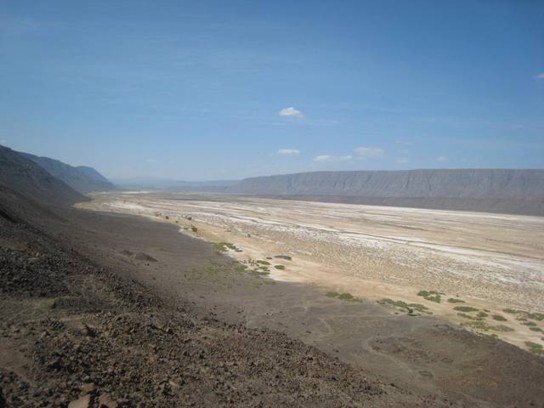East-Central Afar Rift
Geology of the East-Central Afar Rift
The East Central Afar region is bounded by the Tendaho–Gobaad Discontinuity (TGD) in the west and southwest, the Ali-Sabieh Block in the southeast and the southern end of the Danakil Block in the east. Quaternary extension is distributed across the whole area with many faults in a variety of orientations forming, narrow, overlapping, northwest-southeast trending basins. The area is dominated by the Plio-Pleistocene Afar Stratoid Series with only minimal Quaternary magmatism and has an average crustal thickness of about 25km (Hayward & Ebinger, 1996).
The East Central Afar region consists of two major rift systems: in the east is the northwest propagating Ghoubbet–Asal–Manda Inakir rift system which links to the Gulf of Aden through the Gulf of Tajura and in the west is the southeast-propagating Manda Hararo–Gobaad rift which links with the rift systems in Northern Afar (Courtillot et al, 1984; Dauteuil et al, 2001; Beyene & Abdelsalam, 2005). The Ghoubbet–Asal–Manda Inakir rift began to open about 1Ma and propagation has been episodic with alternating phases of magmatic and tectonic activity (Courtillot et al, 1984; Doubre et al, 2007b).
The area between the two rift systems is known as the East-Central block and has undergone clockwise rotation and northeast-southwest directed extension due to the differential spreading rates of the rift systems (e.g. Beyene & Abdelsalam, 2005 and refs therein). It is characterized by a series of major grabens such as the northwest-southeast trending Dobi graben (photo 1). Strain across the Dobi graben is accommodated on high angle normal faults and sinistral strike-slip faults (Hayward & Ebinger, 1996; Beyene, 2004). It was the site of a swarm of shallow earthquakes in 1989. To the northwest it dies out into a zone of diffuse faulting and to the southeast is a transfer zone of relay ramps to another rift segment (Hayward & Ebinger, 1996).
The TGD in the south forms a boundary across which there is a sudden change from rapid northeast-southwest directed extension in the Northern and East Central Afar regions to slow WNW-ESE directed extension in Southern Afar and the Main Ethiopian Rift (Hayward & Ebinger, 1996).
Top: Dobi graben bound by normal faults cutting through the Afar Stratoid Series. The pale brown/white deposits are evaporites. Photo by Lorraine Field, University of Bristol, 2008.
Structural Geology of the Afar Region
